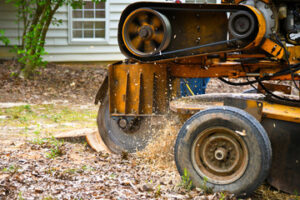The Importance of Leadership Development
Leadership Development can improve a company’s financial performance by increasing employee satisfaction, lowering turnover costs, and creating more productive work. It also helps to build a stronger culture of accountability.

To create an effective Leadership Development program, start by identifying the business priorities that drive the desired leadership behaviors. This will help you target the right training and experience for your leaders. Click Here to learn more.
Self-awareness
Self-awareness is a key leadership trait that helps leaders understand how their actions affect others. It also allows them to recognize their own emotions and beliefs. This is a critical element of Daniel Goleman’s Emotional Intelligence (EQ) model and the Johari Window (transparency, blind spots). It’s essential for leaders to cultivate their self-awareness in order to be effective at work and foster an inclusive environment.
To become more self-aware, leaders should practice regular reflection and self-analysis. This can be done by keeping a journal or setting aside time to reflect on their thoughts and emotions. They should also pay attention to how they respond to different situations. This is important because a leader’s emotions can impact the outcome of a situation. For example, if a leader gets frustrated with their work, they may act in ways that could hurt their team.
Another benefit of self-awareness is that it allows leaders to understand their own strengths and weaknesses. This can help them improve their performance and develop their skills. For instance, if a leader is not good at collaborating with others, they can delegate tasks to more collaborative colleagues. This can make the workplace more productive and reduce conflicts.
In addition, self-awareness helps leaders develop their empathy and communication skills. It allows them to understand how their actions affect others, which can lead to better decisions and a more positive work environment. It also helps them build trust and respect with their team members.
Developing self-awareness is an essential skill for all leaders. It can help them be more successful in their roles, foster a better work environment, and build strong relationships with their teams. It’s also an effective tool for addressing leadership challenges. However, developing self-awareness is not easy and requires a lot of effort and dedication.
To assess self-awareness, a team of researchers developed an instrument that measures its importance for leadership development. The tool consists of four subscales: reflective self-development, awareness of one’s own emotional states and reactions, acceptance of oneself, and proactivity at work. The instrument has been used in a variety of research settings and is suitable for measuring leadership growth.
Role clarity
A team that is clear about its goals and responsibilities can work together more effectively. In addition, it will be able to minimize duplication of effort and gaps in task completion. This will improve efficiency and make communication smoother, particularly in teams with remote members. It will also ensure that everyone recognizes the value of their contributions to the team and organization.
A common challenge for many leadership teams is a lack of clarity about their roles and responsibilities. Managers may think they are providing role clarity by simply outlining a job description. However, true role clarity goes far beyond surface-level descriptions of tasks and responsibilities. It must involve an in-depth understanding of each team member’s capabilities and how they fit into the overall company strategy. It is a continuous process that requires the input of all managers, and it must include the four W’s: What, Why, When, and Who.
Leaders can improve role clarity by creating a psychologically safe environment and providing clear expectations for all employees. They can do this by fostering a culture of trust and encouraging employees to ask questions about their roles. A team that is not clear about its role will struggle to collaborate, and it will be unable to complete projects on time or within budget.
Role clarity helps leaders understand the importance of their role in the success of the team. It also promotes employee engagement and motivates individuals to achieve the team’s goals. It also helps them prioritize tasks, manage their time, and focus on key responsibilities.
Increasing role clarity is a critical part of any organizational transformation. It allows people to be more productive, increase their sense of belonging to the organization, and build better relationships with their colleagues. It will help reduce confusion and frustration in the workplace and create a positive work culture.
Providing clear roles and expectations will help employees feel valued and empowered to take risks in the workplace. It will also allow them to develop their skills and grow as leaders. It will also help reduce the stress and anxiety that comes with uncertainty at work.
Communication skills
The ability to communicate effectively is one of the most important skills for a leader. It can help to align the efforts of teams and build commitment to organizational goals. However, effective communication is a skill that must be developed over time, and leaders need to understand the impact of their behavior on others. The leadership development process includes honing existing skills and acquiring new ones. It also requires self-reflection and a deep understanding of organizational dynamics.
Strong communication skills are vital for every type of role in an organization. At the managerial level, this means being able to explain complex issues in a way that can be understood by employees. At the leadership level, it involves encouraging discussion, building trust, and conveying vision and strategic intent. Communication is also key to fostering a positive work culture, and it can help increase productivity.
As you move up the career ladder, your leadership communication responsibilities expand to include communicating with more stakeholders. Increasing your influence at different levels can make the difference between success and failure. It is also essential to consider the different motivations of different stakeholder groups. For example, the needs of your boss and your peers will be very different from the needs of your direct reports.
Being a great communicator begins with being an active listener. This includes not only listening to what people say but also listening for how they feel and responding to them accordingly. This allows you to gain a better understanding of the needs of your team members and create an open and supportive environment. It also helps you solve any grievances that your team may have.
A good communicator is someone who can clearly and concisely communicate their thoughts, ideas, and feelings to others. This can be done through written and verbal communication, and it can also include visual presentations. A good communicator is also someone who can inspire action and motivate others to achieve the goals of their organizations.
In addition to being a good communicator, a good leader must be able to make difficult decisions without losing the confidence of their team. This is a skill that must be cultivated over time and can be improved through practice and coaching.
Teamwork
Teamwork is one of the most important skills in leadership development. It can help you achieve your goals faster, improve efficiency, and build stronger relationships with your teammates. It also helps you work more effectively by dividing tasks among the team members. In addition, it allows you to learn from your mistakes and develop new skills. This way, you can become more confident and productive in the future.
While teamwork is essential in the workplace, it can be difficult to cultivate. Fortunately, there are many techniques to increase collaboration and foster a culture of trust and open communication. Some of these include using effective communication channels, encouraging failure as a part of the creative process, and ensuring that everyone’s contributions are recognized. These tools are especially helpful for teams that need to make quick decisions and complete time-sensitive projects.
During the industrial revolution, teamwork was not valued as much as it is today. However, it is still important for the success of a venture as it increases the chance of smart decisions being made. It also allows people with different backgrounds to contribute to a project, resulting in innovative solutions. In addition, it is more efficient to work as a group than individually because it reduces redundancy and allows employees to focus on their strengths.
A strong and supportive team is vital for a company’s success, and it is crucial that leaders are capable of building and maintaining a cohesive team. However, this is not an easy task, and it requires strong leadership skills. A good leader will understand the importance of fostering teamwork in their organization and will encourage and motivate their employees to work together.
Moreover, a great leader will recognize the achievements of their team and will acknowledge them publicly. This will motivate the team to continue working hard and will improve their performance in the future. They will also promote the use of collaborative tools, such as monday, to ensure that all members are on the same page. This will ensure that the whole team is able to make better decisions.








